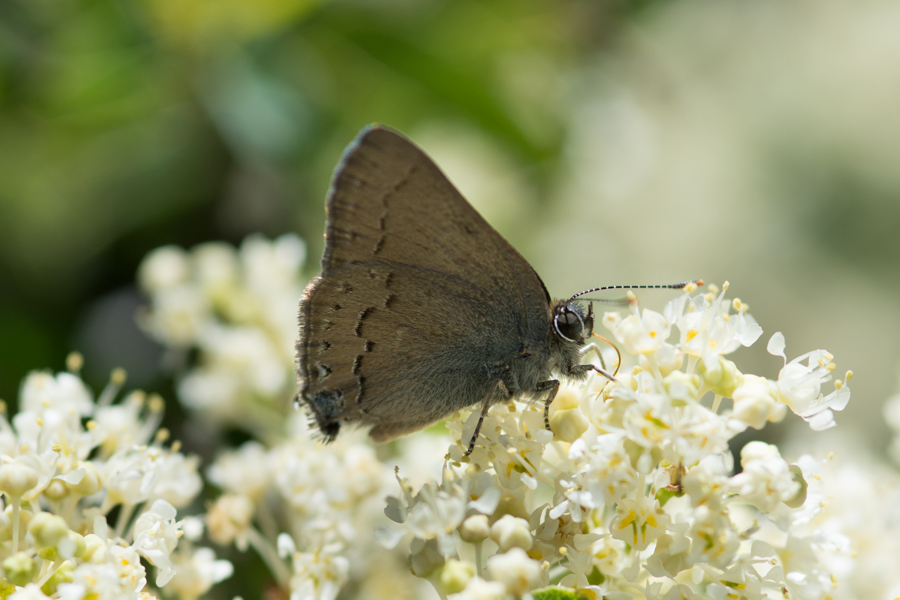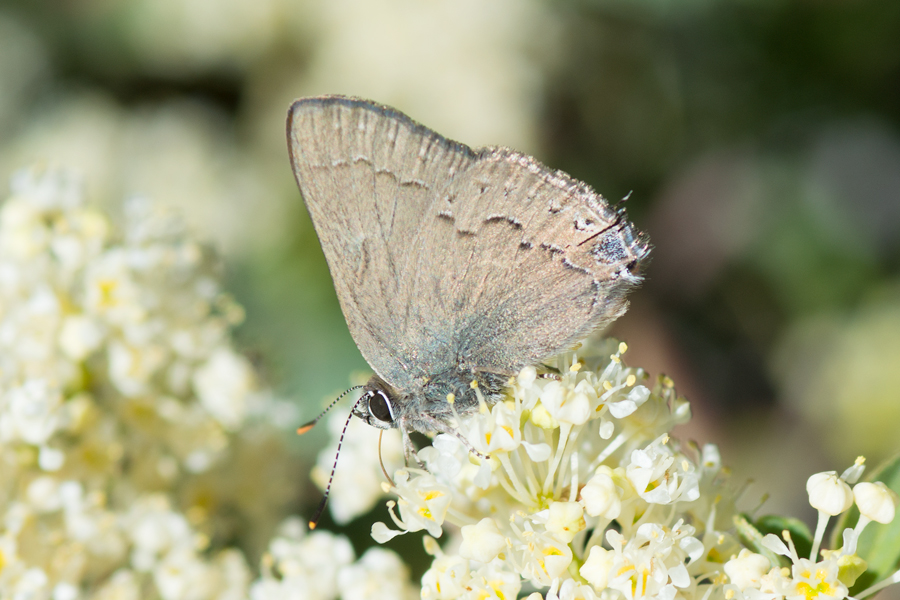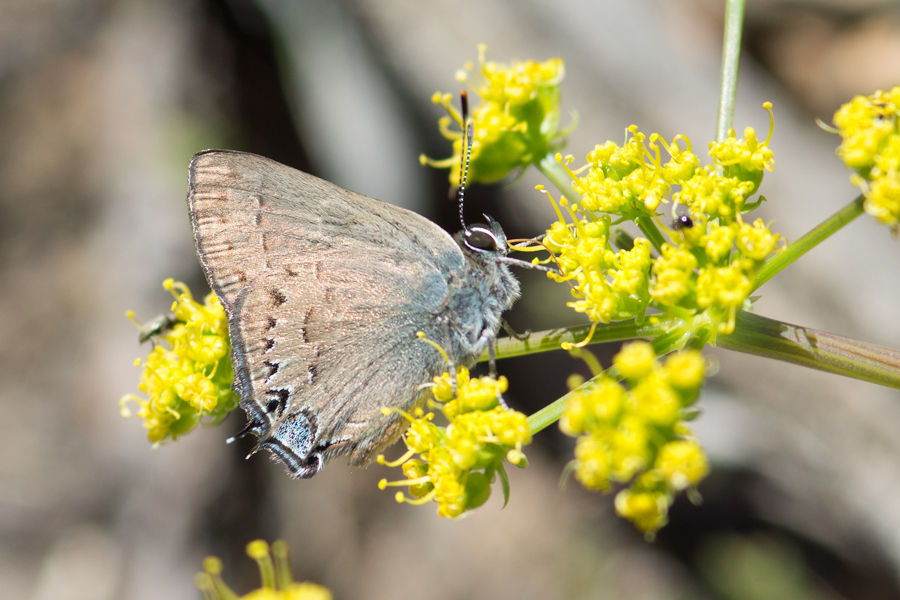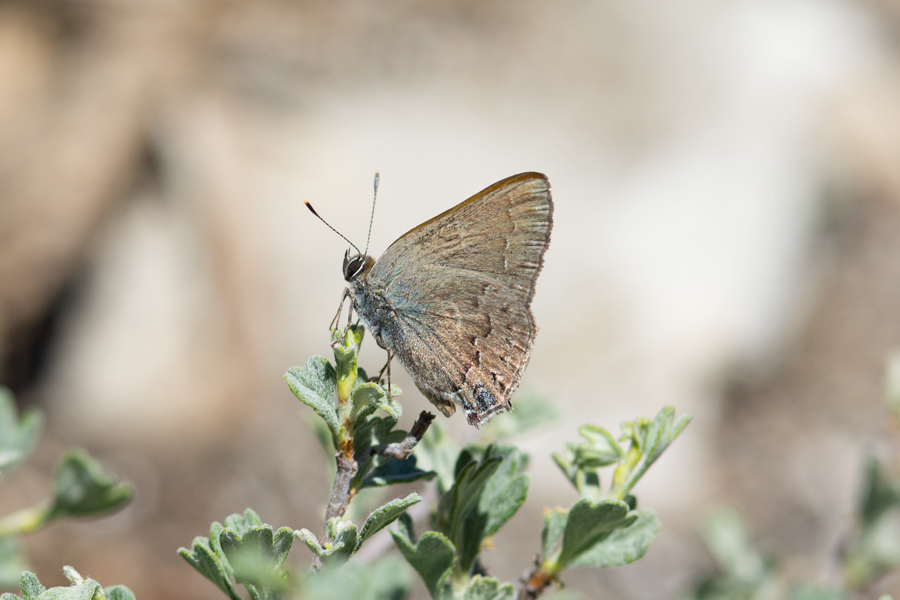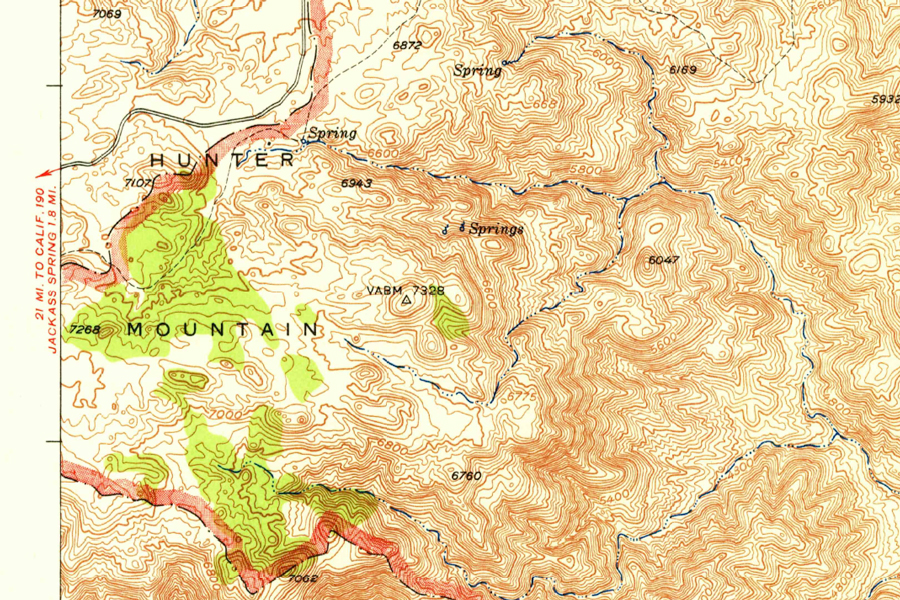Satyrium saepium subaridum
'Desert' Hedgerow Hairstreak
A series of what came to be Satyrium saepium subaridum was collected by John F. Emmel and Oakley Shields in the Death Valley area in 1979, and formally described in the 1998 Systematics book as a new subspecies. The relatively well-defined postmedian line on the ventral side of the wings is a defining characteristic. Because it flies late in the year for a desert species (a single brood from mid-June to early August), it isn't well understood, according to Ken Davenport, who also says the Walker Pass and Bald Mountain populations are subaridum. My photos are from the latter location. The host plant is Ceanothus greggii.
This male hedgerow hairstreak at Bald Mountain shows the bold postmedian line that is a key to its identity. June 28, 2017.
Another subaridum on ceanothus, the host. The subspecies name refers to the subarid habitat where the butterfly was discovered.
Females have longer tails.
Another male. The postmedian line is not quite as bold in some of them on the forewing.
The type locality for subaridum is near Hunter Mountain in Death Valley National Park: a "small stream and meadow 0.4 air mile southeast of peak 7107 on 1951 U.S.G.S. Marble Canyon Quadrangle, 6,800' elevation; 9 July 1979; leg. J. F. Emmel and O. Shields." The series collected there on the 8th and 9th of July in 1979 and on July 15, 1982 by John Emmel and Oakley Shields is at the L.A. Natural History Museum.
©Dennis Walker
